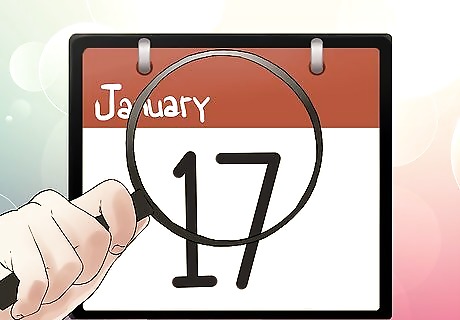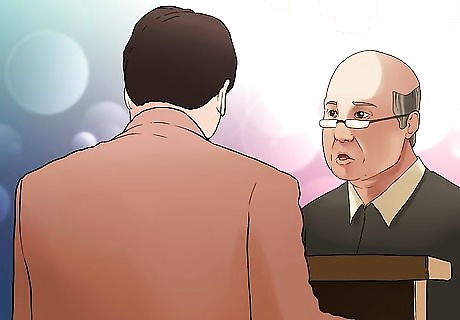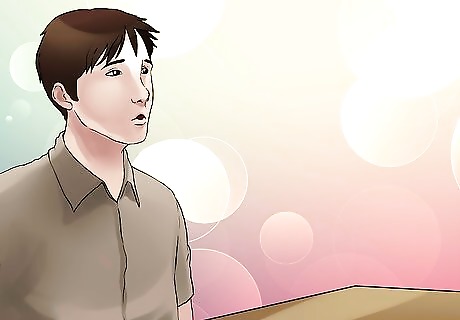
views
- Check your citation for the date of your arraignment. This is your chance to make your plea of guilty, not guilty, or guilty with explanation (this isn’t your court date).
- Serve a request for production to see all the evidence against you. Examine the evidence to prepare your case and justify your actions.
- In court, describe the event in your own words, assert your claim, and present your evidence. After your closing statement, the judge will make their verdict.
Preparing For Your Arraingment

Examine the ticket and all of the associated paperwork. Unfortunately, fraud and identity theft are becoming more-and-more popular. In some cases, con artists will mail-out falsified tickets in order to obtain an individual's private information. Make sure all of the information provided on the ticket is accurate and complete. Is your name spelled correctly? Address correct? If any of this information is incorrect or missing it may be an indicator of fraud.

Contact the agency that issued the ticket (i.e., the highway patrol or the local police department). Only the agency that issued the traffic violation can verify whether-or-not your ticket is indeed authentic. Have your citation number ready.

Check your court date. The time and day of your arraignment should be listed on your citation. This is also the last day to pay any fees or penalties if you choose to do so. The ticket will also have the address and contact information for the courthouse you will be required to appear. In some states, this is the latest date that you can pay or appear in court. In these states you may appear in court anytime before this date to be arraigned.

Understand that an arraignment is not a court hearing. On this day, you will not be presenting your case or your evidence to the judge, but will instead, be entering a plea of guilty, guilty with explanation, or not-guilty. Those who enter a guilty with explanation plea, are admitting guilt but asking the court to consider the circumstances and conditions of their violation. This can lead to reduced penalties.

Appear in court for your arraignment. When the judge announces your name and case you will be asked to identify yourself, at which time you will be able to enter a plea. Once you plead not-guilty, a date for your court-hearing will be set. Be sure to be on time.

Visit the traffic court clerk. The court clerk will help you with all of the appropriate paperwork, and will be able to provide you with further information regarding your personal defense. This will include a time and date for your hearing, as well as a specific courtroom address and room number.

Ask the clerk how to properly "serve" the prosecutor with a "request for production" (more on this later). Properly filing a "request for production" is very important. It establishes a legal date of receipt. Depending on your state, the prosecutor will then have a pre-determined amount of time to respond. If they fail to respond, you can ask to have your case dismissed. This paperwork will be needed when you return to court.
Contesting the Ticket

Know how the red light camera works. Red light cameras take two pictures – one of the driver and one of the car's license plate. If someone else is driving, and this is clear in the photograph, you can ask to have your case dismissed. You can also ask to have your case dismissed if the photograph of the driver is blurred or unclear, to the point that the driver's identity remains in question. Check the license plate. If it doesn't match the car you own, raise this as evidence for dismissal of the ticket.

Compose a "request for production" or a "discovery request." This written request requires the prosecutor to provide you with a list of the evidence that is going to be used against you in court. If this request is not met within a set number of days--which is determined by your local state laws--it may be grounds to have your ticket dismissed. Consult your traffic court clerk for more details regarding the number of days your state allows the prosecutor to respond. Evidence can include photographs, lists of witnesses, etc.

Serve the request. If you have already visited the court clerk, you will have all of the information needed to properly serve the prosecutor. When a prosecutor is served, he or she is legally acknowledging that they have indeed received your request. This establishes a legal date of receipt. If the prosecutor does not provide you with this; or does so beyond the legally allotted amount of time determined by your state, you can ask to have your case dismissed.

Save all your paperwork. This includes copies of your written request, copies of the paperwork you filed to serve the prosecutor, and anything that you have received in return. All of this is evidence. You will need this in case you request to have your case dismissed for any reason.

Examine the details being presented against you. Again, if the prosecutor has failed to present you with a "request for production;" or if it was not provided in the legally-allotted time, you can ask the judge to dismiss your case.

Prepare explanations for each piece of evidence or note listed on the "request for production." Specifically, review the photograph. Is it clearly you in the photograph? If not, it can be grounds for dismissal. If you were not the individual driving the car, then the photographs should support that claim and you can have your case dismissed.

Bolster your claim by finding as much evidence as you can. Visit the scene and take detailed notes. Time the traffic light as it transitions from yellow-to-red. If the timing is minimal, you might be able to stage an argument in court that there is not enough time to safely bring your vehicle to a stop at the particular intersection. A copy of the photograph should be included with your "request for production."

Justify your claims and argument. You should have a clear line of defense and be able to explain exactly why it is your case should be dismissed. Is the timing of the light too short? Is it not you in the photograph? Are you hoping to have your case thrown out due to some other 'loop-hole'? Know exactly what you are going to argue before you enter the courtroom. Have a clear reason for your case to be dismissed.
Defending Yourself In Court

Prepare all of your evidence. Arrange each piece of paperwork or evidence neatly in a folder and in the order that you wish to present it to the judge. It might be helpful to have a checklist of points that you wish to make.

Check your paperwork for the details regarding your hearing. Specifically, the court address, hearing time, and court-room number. The courthouse that you will have your case heard may not be the same courthouse where you were first arraigned. Be sure you know where you are going and when you need to be there.

Appear in court on time. Your case will not be the only one that the judge will be hearing that day; rather, he or she will be hearing several cases. The order in which the cases are heard will be determined by the court. Be prepared to spend an entire day at the courthouse. You may want to pack a lunch or bring snacks. You might have to pay for parking, so be prepared.

Identify yourself to the court when your case is ready to be heard. The judge will then briefly review the details of your case before allowing the prosecutor to present the evidence against you. Do not interrupt.

Listen to the prosecuting attorney present the case. There may be bits of information that are new to you, or that perhaps you were unprepared to address.

Take notes. Specifically, pay attention to any discrepancies between the prosecutor's verbal argument and the hard-evidence being presented.

Ask for the case to be dismissed. If any of these conditions have not been met than you may have grounds to have your case dismissed by the judge. A "request for production" was not received, or was not received in the proper amount of time. Your hearing has been delayed by the court beyond a responsible expectation to a "fair and speedy trial." Your court clerk can will have more information regarding the number of days your state has determined as "fair and speedy."

Describe the event in your own words. When it is your time to present your case, begin by providing a detailed account of the event from your own perspective. Include relevant information such as exact time, day, intersection, weather conditions, etc. Point out any discrepancies between your account and the prosecutor's. Does the prosecutor's account match the hard evidence?

Assert your claim. After you have described the conditions of the event, and after you have addressed any discrepancies, you should go ahead and re-assert to the judge why it is you wish to have your case dismissed. Were there any extenuating circumstances that you believe should be considered? Is the timing of the light flawed? Was it unsafe to stop?

After you have made your case, present your evidence to the judge. Only provide evidence that fully-supports your claim, or that directly challenges the case as it was presented by the prosecutor. After you have presented your evidence, the judge will then move on to the closing statements. The prosecutor will go first.

Listen to the prosecuting attorney's closing argument. You do not necessarily need to respond to his or her closing statements as you have already made your case.

Provide your own closing statement. Reiterate and summarize your argument or the reason you are seeking dismissal. Be as clear and concise as possible. Speak as if answering the question, "why should your case be dismissed?" Be factual, not emotional.

Wait for the verdict. If all went well, then you may have just successfully defended yourself against a red-light camera violation.


















Comments
0 comment